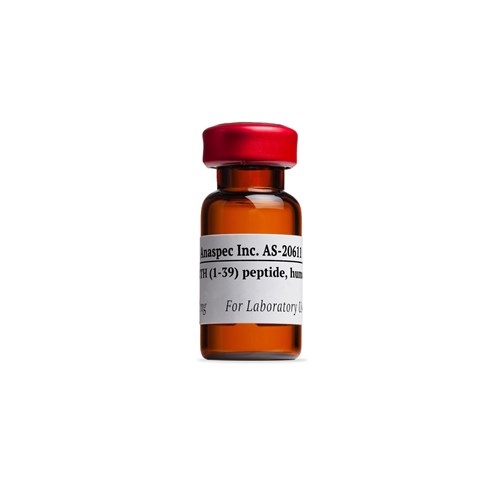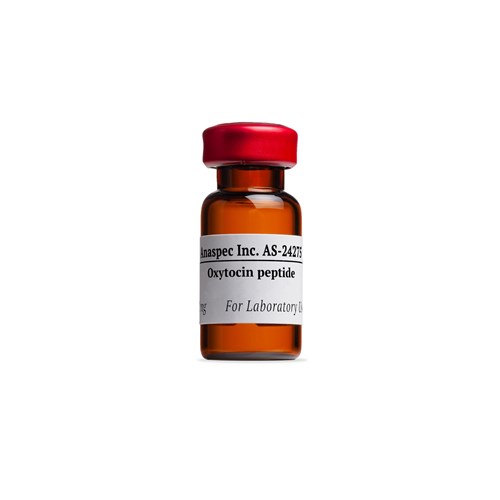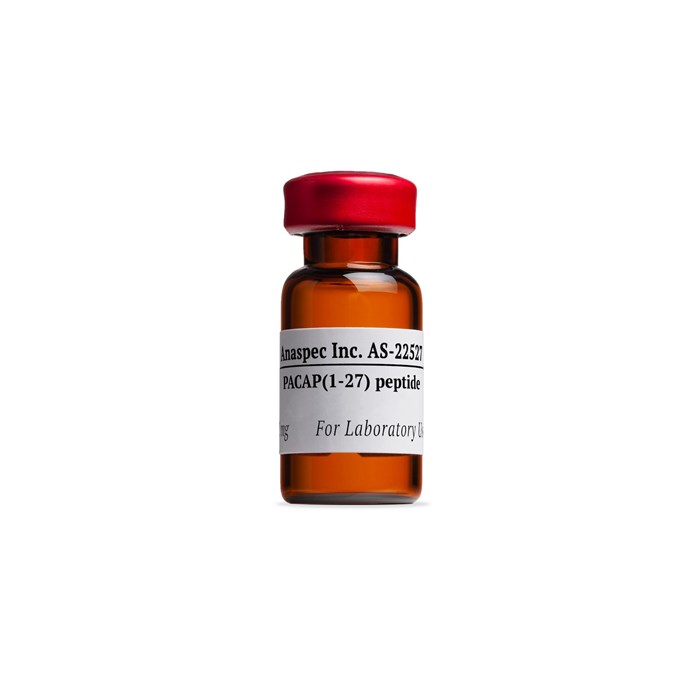We use cookies to offer you the best experience on our site. You can find out more about the cookies we use or disable them in the Cookie settings
PACAP (1-27), amide, human, ovine, rat - 0.5 mg
- Cat.Number : AS-22527
- Manufacturer Ref. :
-
Availability :
In stock
Alternative choices
PACAP-27, the N-terminal fragment of PACAP-38, is a neuropeptide originally isolated from bovine hypothalamus, but is also found in humans and rats. It shows considerable homology with Vasoactive Intestinal Polypeptide (VIP), but stimulates adenylate cyclase much more potently than VIP. PACAP27 and PACAP38 stimulate cAMP accumulation and increase [Ca2+]i through the type I PACAP receptors.
Specifications
| Chemistry | |
| Sequence one letter code |
|
|---|---|
| Sequence three letter code |
|
| CAS registry number |
|
| Molecular Formula |
|
| Molecular Mass/ Weight |
|
| Modification | |
| Conjugation |
|
| Quantity & Purity | |
| Purity |
|
| Storage & stability | |
| Form |
|
| Activity | |
| Biomarker Target | |
| Research Area | |
| Sub-category Research Area | |
| Usage |
|
| Source | |
| Source / Species |
|
| Codes | |
| Code Nacres |
|
You may also be interested in the following product(s)



Citations
Pituitary adenylate cyclase-activating polypeptide regulates brain-derived neurotrophic factor exon IV expression through the VPAC1 receptor in the amphibian melanotrope cell
Endocrinology . 2008 May 01 ; 149(8) 4177 | DOI : 10.1210/en.2008-0131
- A. Kidane
- et al
Actions of PACAP and VIP on melanotrope cells of Xenopus laevis
Peptides . 2007 Mar 30 ; 28(9) 1790 | DOI : 10.1016/j.peptides.2007.03.013
- A. Kidane
- et al
Soluble adenylyl cyclase is required for netrin-1 signaling in nerve growth cones
Nat Neurosci. . 2006 Sep 10 ; 9(10) 1257 | DOI : 10.1038/nn1767
- K. Wu
- et al
